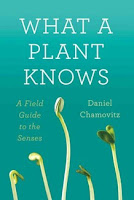Cycads at Crystal Bridge Tropical Conservatory

During the Jurassic Period , dinosaurs ate Cycads as part of their vegetarian diet. Today, many Cycads are on the verge of extinction. According to the Cycad Society , more than half of the 320+ species are threatened or endangered. The Australian Cycad Pages point out that "Cycad plants are long-lived and slow-growing, with slow recruitment and population turnover. The fleshy and starch-rich stems are highly susceptible to fungal attack, and almost all species grow in well-drained soils or sites. Habitats range from closed tropical forests to semideserts, the majority in tropical or subtropical climates in regions of predominantly summer rainfall. Cycads often occur on or are restricted to specialised and/or localised sites, such as nutritionally deficient sites, limestone or serpentinite outcrops, beach dune deposits or precipitously steep sites." One of the U.S. locations where you can enjoy them, is at Myriad Botanical Gardens, Crystal Bridge Tropical Conservator...








